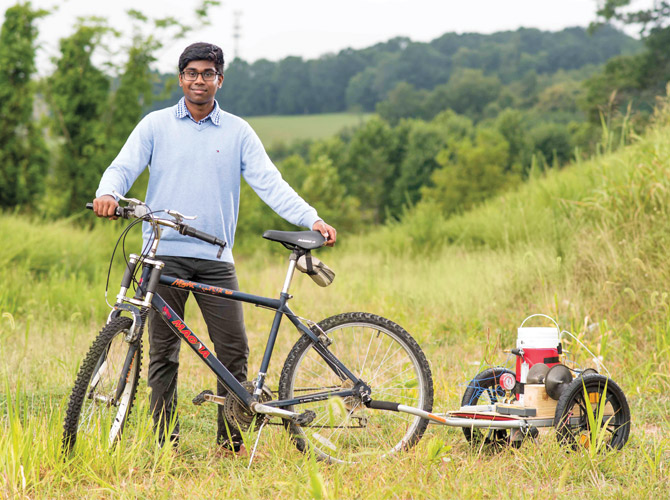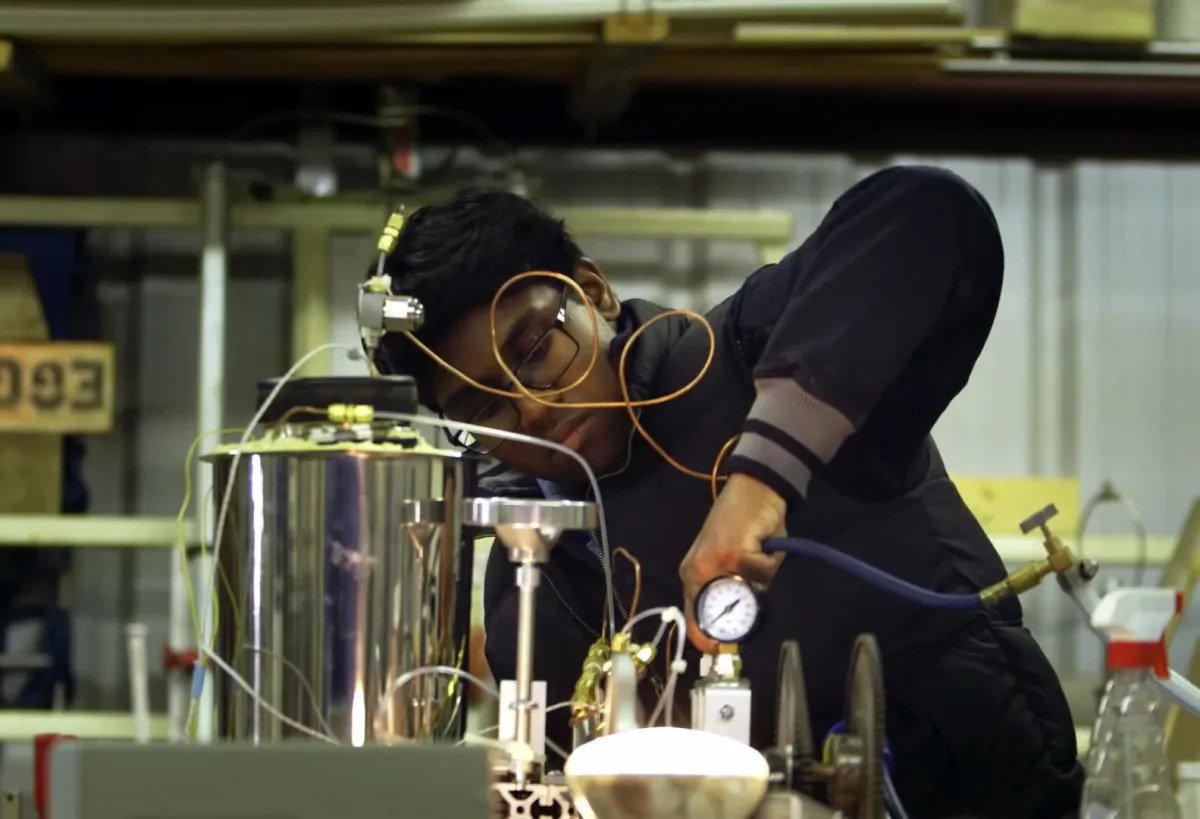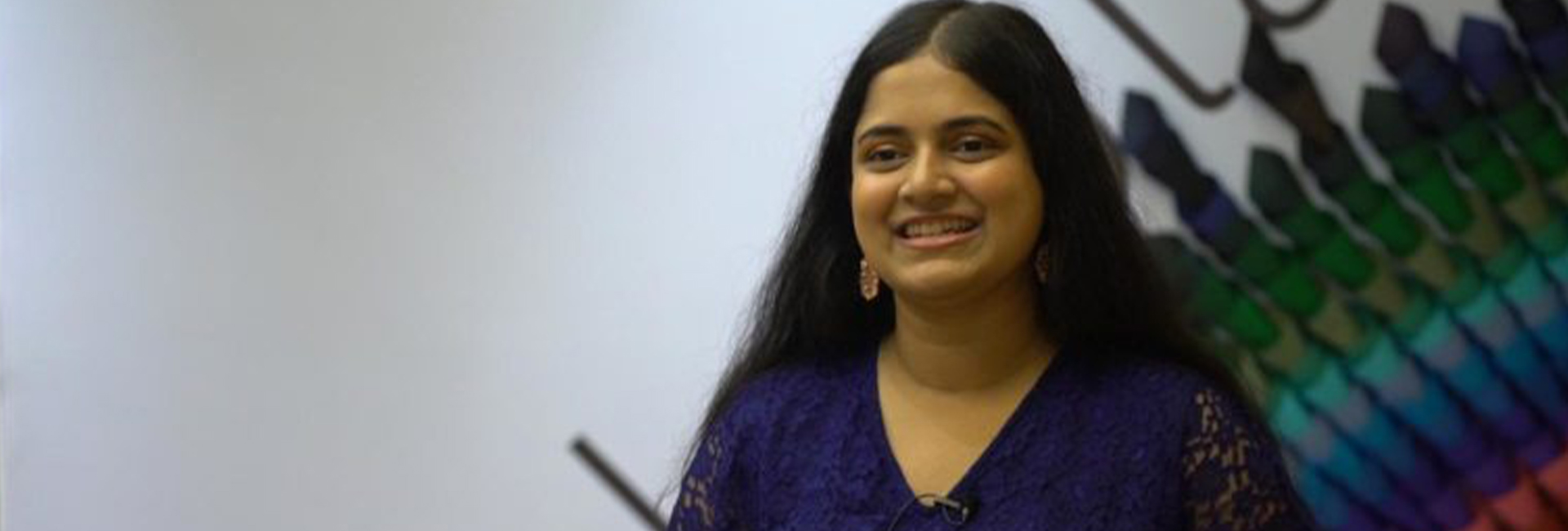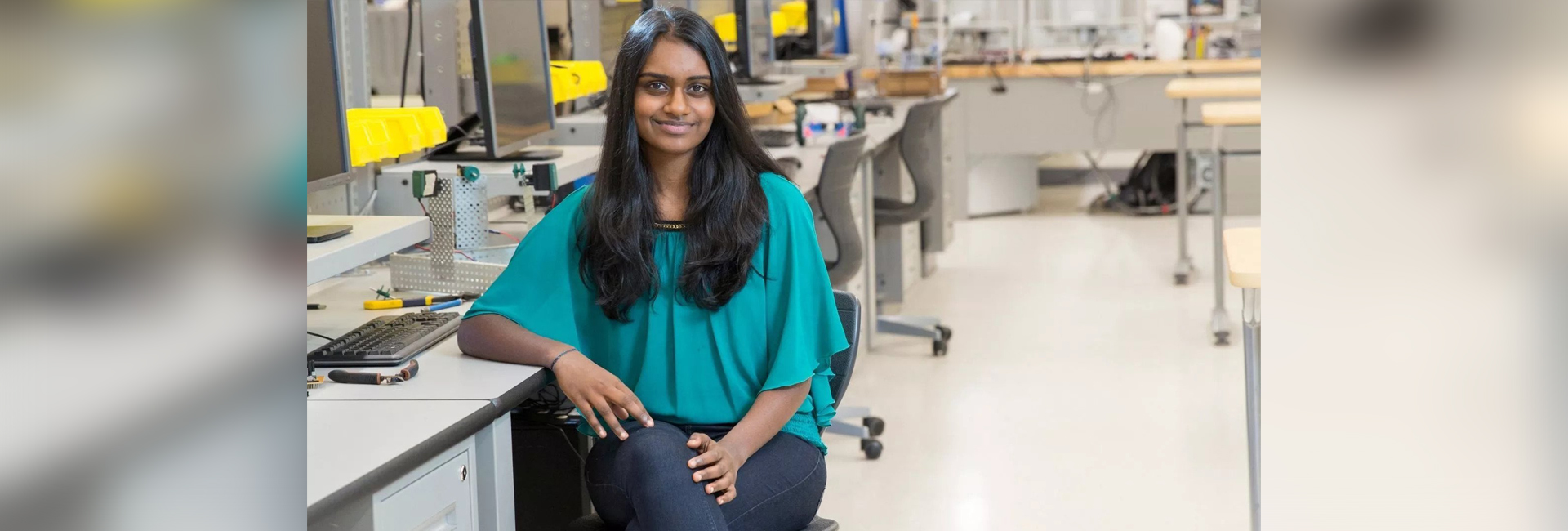(March 30, 2023) Almost every year, over one million kids die as a result of not getting vaccinated on time. The unavailability of vaccination transportation and storage facilities in several developing parts of the world has proven to be fatal for those who cannot afford expensive healthcare institutions. While the world leaders are still discussing the issue, a young innovator – Anurudh Ganesan – has been working tirelessly to resolve the problem in his backyard. At just 15, Anurudh invented VAXXWAGON, a portable refrigeration system to transport vaccines safely and effectively. The invention won him a slew of awards, including the LEGO Education Builder Award and the Gloria Barron Prize for Young Heroes. The VAXXWAGON runs on a “no ice, no electricity” system and is very cost-effective (less than $100), and can also keep the temperature consistent for several hours at a stretch.

Living in Clarksburg, USA, the young innovator’s VAXXWAGON is inspired by the problems faced by healthcare workers who have to transport vaccines to the remotest corners of the world. After working on the prototype for several years, the youngster came up with a machine that would require only 2.3 watts of energy to cool a well-insulated cold chamber. “In this day and age, nobody should die from vaccine-preventable diseases,” the innovator believes, “I’m committed to seeing this project through to the next phase. I will have succeeded when the first person’s life is saved because of VAXXWAGON.”
Destiny’s child
When he was an infant, his grandparents carried him ten miles in rural South India to get him his routine polio vaccination. When they finally arrived, they found the vaccines were useless after having not been refrigerated for an extended period. “I was fortunate,” he told Global Indian, adding, “For many, that trek to be vaccinated is a matter of life and death.” Anurudh was able to receive the vaccine the next day but realised that so many others aren’t as lucky, with 4,000 children dying every day from vaccine-preventable diseases.
Always the one to raise important questions and come up with innovative solutions, he recalls asking his father when he was five years old, about inventing a vehicle that doesn’t need gas. Anurudh didn’t stop there. He went on to research the subject, learning everything he could about self-generating power. In keeping with this, VAXXWAGON works with “wheel-powered refrigeration”. As the wheel turns, mechanical energy is converted to thermal energy and can keep vaccines cold for up to 16 hours after being powered for only half that time.
What an idea
It was while he was working on a school project that the young innovator got the idea for VAXXWAGON. He read several textbooks to learn everything he could about refrigeration, then he did research online to learn more about vaccines. Next, he began formulating his ideas on paper. Rather than relying on electricity or ice, Anurudh figured out a way to use wheels to power a refrigeration system for about eight hours. The entire rechargeable cooling system can be pulled to areas in need of vaccines by bicycle, car, or animal.


However, there was a loophole in his design that he not only identified but also managed to fix. To be safe and effective, vaccines must maintain a “Goldilocks temperature” between 2 and 8 degrees Celsius — similar to a very cold refrigerator — from the time they leave the manufacturers to the moment they reach the patient. Hospitals will package the vaccine on ice, but this can easily backfire if the ice is too cold and freezes the vials, or if it melts before the vaccine reaches its destination. “I took a refrigerator apart,” the innovator recalled, adding, “I saw how it worked and tried to re-engineer it so that it used no electricity and no ice to provide accurate refrigeration of vaccines while in transport.” All this, in roughly $100.
Eventually, Anurudh took his design to professors at Johns Hopkins University in Maryland for advice. Not only did they confirm that VAXXWAGON could work, but they also offered Anurudh funding to help build it. To test the prototype he had built, the innovator ran the VAXXWAGON on a treadmill at eight miles per hour for six hours — racking up the energy to power the refrigerator — and let it rest for nearly five hours to collect data while the compressor wasn’t being powered. In this simulated last leg of the trip, the fake vaccines maintained a temperature in the Goldilocks ranges for over four hours.
The road ahead
After nearly two years of refining a half-dozen prototypes, Anurudh has a patent pending for his latest design of VAXXWAGON now. He has won several awards for his innovation including Google Science Fair and also got a chance to demonstrate the working of the machine to US President Obama at the annual White House Science Fair. However, his main priority at this time is to start selling the machine to relief organisations by the end of the year so it can be used to help people around the world.
“In my mind,” the innovator said, “my design will be a success as soon as it saves even a single life. If it can save one life, it can save many more.” Currently, pursuing a finance degree at the Wharton School at the University of Pennsylvania, Anurudh’s message to the other young innovators is quite simple. “Don’t give up on your ideas. But always try to help others with your projects. That’s the point of innovation – to help people.”
- Follow Anurudh Ganesan on LinkedIn




